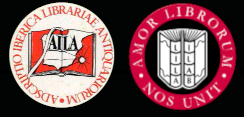


Home |
Temáticas |
Catálogos |
Pedidos |
  |  |
|||||||
|

|
RUGENDAS. (Johann Moritz) HABITANTE DE GOYAS, QUADRO A ÓLEO PINTADO SOBRE MADEIRA. |
|
|
Clique nas imagens para aumentar. FOREST DE BELIDOR. (Bernard) LA SCIENCE DES INGENIEURS DANS LA CONDUTE DES TRAVAUX DE FORTIFICATION ET D’ARCHITECTURE CIVILE,DEDIÉE AU ROY. Par Mr. BELIDOR, Commissaire Ordinaire de l’Artillerie, Professeur Royal des Mathématiques aux Ecôles du même Corps, Membre des Académies Royales des Sciences d’Angleterre, & de Prusse, & Correspondant de celle de Paris. NOUVELLE EDITION. A LA HAYE, Chez Pierre Gosse Junior, Libraire de S. A. R. M. DCC. LIV. [1754]. De 26,5x21 cm. Com [i], [xvi], 80, 64, 96, 104, 80, 80 [vi], [ii em br.] págs. Encadernação da época inteira de pele com nervos e ferros a ouro em casas fechadas. Ilustrado em extratexto com uma gravura em talhe-doce de Rigault, bela composição alegórica com uma vista da construção de uma fortificação, com diversos trabalhadores e pequenos anjos e crianças que se dedicam a estudar plantas e livros técnicos, onde o presente se inclui; e 52 gravuras desdobráveis em água-forte, distribuídas por cada parte da seguinte forma: I - 3; II - 3; III - 5; IV - 25; V - 14; VI - 2. Inclui tabelas no texto. Rosto impresso a vermelho e preto. Texto em caracteres itálicos no rosto, dedicatória, índice de capítulos, subtítulos, notas e expressões matemáticas. Inclui iniciais ornamentadas, cabeções alegóricos e florões de remate em xilogravura. As notas são impressas à margem. Exemplar com falhas de pele na lombada e nos cantos das pastas e marcas de corte na pasta posterior. Tem manchas de humidade junto às margens de algumas folhas e pequenos picos de traça sem afectar a mancha tipográfica. Alguns cadernos encontram-se levemente desconjuntados. Apresenta carimbos oleográficos de posse de A. de Aguiar no verso da gravura e na guarda anterior e assinatura de posse coeva de «Souza» na folha de rosto. Tem leves anotações a lápis no verso da folha de guarda anterior. A gravura que antecede a folha de rosto encontra-se mal enquadrada e por isso excessivamente aparada no canto inferior esquerdo. Primeiras páginas não numeradas com dedicatória ao rei, prefácio e licenças. As últimas com índice de capítulos. Obra muito valiosa e importante para o estudo da engenharia e arquitectura militar francesa do século XVIII. Discorre desde o estudo teórico da mecânica clássica e de materiais e técnicas de construção, até à sua aplicação prática, por exemplo, na construção de infraestruturas militares. Fornece também algum contexto histórico e aborda os ornatos e símbolos decorativos utilizados. Divide-se em 6 partes, cada uma com paginação própria, nomeadamente: I. de la Theorie de la Maçonnerie; II. de la Mecanique des Voutes; III. de la Construction des Travaux; IV. des Edifices Militaires; V. de la Décoration; VI. de la Maniere de faire les Devis. As primeiras duas partes dedicam-se ao estudo aplicado de mecânica clássica, apresentando teoremas e proposições acompanhadas da respectiva demonstração, principais corolários e ilustrações com figuras. Incluem problemas que evidenciam a forma de aplicar os conceitos teóricos explicados. As restantes partes, de carácter mais prático e profusamente ilustradas, apresentam a descrição e estudo de diferentes materiais e técnicas de construção; de diversas infraestruturas militares; da história e importância de ornamentos e símbolos decorativos; etc. De notar que os capítulos 7 e 8 do livro III são constituídos por excertos de Vauban. Segundo Pierre Alexandre Joseph Allent, o capítulo 8 é um dos textos inéditos de Vauban. Bernard Forest de Bélidor, nascido na Catalunha (Espanha) em 1698 e falecido em Paris em 8 de setembro de 1761, foi um engenheiro militar francês. À data da sua morte, era brigadeiro dos exércitos do Rei, cavaleiro de Saint-Louis, inspetor do Arsenal de Paris e das Mines de France (desde 1758), e membro das Academias Reais de Ciências de França, Inglaterra e Prússia. A sua principal obra é L'Architecture hydraulique, em que o cálculo integral é utilizado pela primeira vez para resolver problemas técnicos. Esta seria a soma e a síntese dos conhecimentos e dos materiais ensinados e postos à disposição dos engenheiros até ao final do século, e a obra de referência para os estudantes da École des ponts et chaussées. Bélidor também acompanhou Giovanni Domenico Cassini e Philippe de La Hire na sua expedição para medir o meridiano de Paris na década de 1710.
Illustrated hors-texte with an intaglio engraving by Rigault, beautiful allegorical composition with a view of the construction of a fortification, with various workers and little angels and children engaged in studying plants and technical books, where the present one is included; and 52 folding engravings, etched in metalplates, distributed by each part as follows: I - 3; II - 3; III - 5; IV - 25; V - 14; VI - 2. Includes tables in the text. Title page printed in red and black. Text in italics on the title page, dedication, chapter index, subheadings, notes and mathematical expressions. Includes ornate initials, allegorical headpieces and woodcut finishing fleurons. The notes are printed in the margin. Copy with leather flaws on the spine and corners of the boards and cut marks on the back board. Moisture stains near the margins of some leaves and small moth holes without affecting the text area. Some quires are slightly disjointed. Oleographic ownership stamps from A. de Aguiar and the Library of the Ministry of Agriculture on the frontispiece, front endpaper and front pastedown and coeval handwritten ownership title from "Souza" on the title page. Slight pencil annotations on front pastedown. The engraving preceding the title page is poorly framed and therefore excessively trimmed in the lower left corner. First unnumbered pages with dedication to the king, preface and licences. Last few with chapter index. Very valuable and important work for the study of 18th-century French military engineering and architecture. It ranges from the theoretical study of classical mechanics and building materials, and techniques to their practical application, for example in the construction of military infrastructure. It also provides some historical context and discusses the decorative ornaments and symbols used. It is divided into 6 parts, each with its own pagination, namely: I. de la Theorie de la Maçonnerie; II. de la Mecanique des Voutes; III. de la Construction des Travaux; IV. des Edifices Militaires; V. de la Décoration; VI. de la Maniere de faire les Devis. The first two parts are devoted to the applied study of classical mechanics, presenting theorems and propositions accompanied by their demonstration, main corollaries and illustrations with figures. They include problems that show how to apply the theoretical concepts explained. The remaining parts, of a more practical nature and profusely illustrated, present the description and study of different materials and construction techniques; of various military infrastructures; of the history and importance of ornaments and decorative symbols; etc. It should be noted that chapters 7 and 8 of Book III are made up of extracts from Vauban. According to Pierre Alexandre Joseph Allent, chapter 8 is one of Vauban's unpublished texts. Bernard Forest de Bélidor, born in Catalonia (Spain) in 1698 and died in Paris on 8 September 1761, was a French military engineer. At the time of his death, he was a brigadier in the King's armies, a knight of Saint-Louis, an inspector of the Arsenal de Paris and the Mines de France (since 1758), and a member of the Royal Academies of Sciences of France, England and Prussia. His major work is L'Architecture hydraulique, in which integral calculus is used for the first time to solve technical problems. This would be the sum and synthesis of the knowledge and materials taught and made available to engineers until the end of the century, and the reference work for students at the École des ponts et chaussées. Bélidor also accompanied Giovanni Domenico Cassini and Philippe de La Hire on their expedition to measure the Paris meridian in the 1710s. Referência: 2306SB006
Local: M-6-D-9 Caixa de sugestões A sua opinião é importante para nós. Se encontrou um preço incorrecto, um erro ou um problema técnico nesta página, por favor avise-nos. 
|
Pesquisa Simples




|
||
 |
|||
|